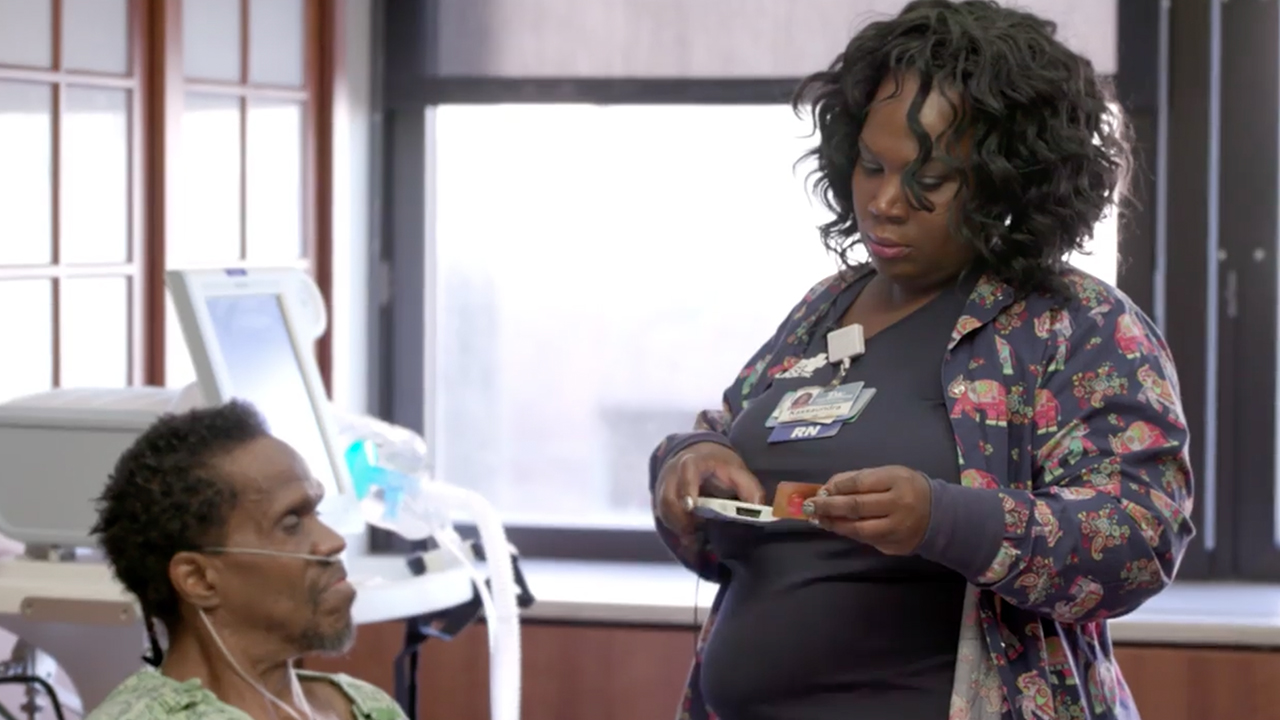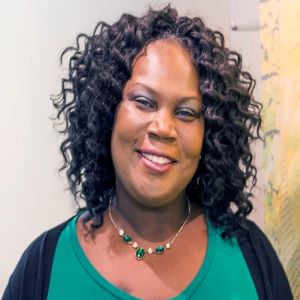
Stories from the Edge: Truman Medical Centers are Lightening the “Nurse Toolbelt,” Giving More Weight to Effective Care-Team Communications
"It's hard to communicate and work effectively with all of these devices." Over the years, I’ve heard many nurses say this about the phones, pagers, cameras, laptops/tablets and scanning devices have long comprised the “nurse toolbelt.” And I agree with this admittedly ironic statement. I know these devices, in theory, can enable me to connect instantaneously with my colleagues, document patient care actions and update shared records systems. But equipping healthcare providers with too many devices can be counterintuitive.
From my personal experiences as a nurse over the last 10 years, I know that it can be challenging to keep the data from each device synced up throughout the day. It can also be hard to sync each device’s data with back-office records systems – the ones that we all rely on to monitor patient status and escalate issues. That can lead to delayed communications with others on my patient care teams and, therefore, hinder our collective ability to provide the highest quality of care.
In fact, there have been many times when I’ve opted to sit by the phone waiting on someone from the care team to call back to answer a concern for my patient. That can take as little as a few minutes, to an hour, and sometimes I would never get a call back. The reality of sitting and waiting takes time away from nursing care and keeps the nurse from the patient’s bedside.
That’s why I was beyond thrilled when Cerner introduced CareAware Connect™, a unified clinical communication and collaboration platform, on Zebra TC51-HC mobile computers. The KC one team*, in collaboration with Cerner, Zebra and my employer Truman Medical Centers used this mobility solution to launch the CareAware Connect initiative across Truman’s inpatient facilities and level-one trauma center**.
Less is More When it Comes to Clinical Mobility
I am a huge advocate of technology. I have witnessed firsthand how it helps to elevate the quality of patient care. It also improves our overall business operations. Truman Medical Centers was recently re-certified as a Stage 7 hospital for both acute and ambulatory services within the HIMSS Electronic Medical Record (EMR) Adoption Model (EMRAM) – the highest level possible. Without a doubt, our widespread adoption of real-time data collection and processing technologies was central to this achievement.
But I can also tell you that equipping clinicians with “more” technology is not always going to deliver desired workflow improvements or better patient care outcomes.
The TC51 allows me to focus more on my patient – and I would even say I became a more efficient nurse – when my “toolbelt” was reduced from five devices down to one versatile mobile device. Watch this:
As I mentioned in the video, I can now use one Zebra TC51-HC handheld mobile computer leveraging CareAware Connect to pull up patient histories, such as orders and last vitals, or confirm current medications and allergies. I communicate with physicians, family members and other healthcare staff to discuss patient care and make on-the-spot decisions. I can capture high-quality pictures of wounds or other medical issues, administer medications, perform specimen collections, complete routine reporting regarding patient interactions, and receive critical alerts. All without leaving the patient’s side.
That increased facetime with patients is so beneficial to both the hospital and the patient. Nurses are able to react more quickly in critical situations – we don’t have to walk out of the room to receive new orders, page a doctor or answer a call. And patients enjoy more personal attention, which can be comforting.
Speaking of spending more time with patients…
I’d be remiss if I didn’t also mention the other hidden benefit of a “one device” healthcare communications strategy: the one-minute infection control protocol.
Time isn’t always on the side of patient care teams. Even in non-critical care environments, the volume of patients that many medical facilities see each year can be burdensome without well-refined business processes. (We handle about half a million patient visits annually at Truman Medical Centers.) That is why healthcare leaders are constantly seeking ways to increase speed and efficiency starting with patient intake, all the way through to discharge, billing and beyond.
The team at Truman realized through routine efficiency reviews that it would often take our nursing team up to 10 minutes to disinfect just one communications device from our “nurse toolbelt.” (The process for non-rugged devices is especially tedious as we must be careful not to damage the device in the process.) Multiply those 10 minutes by the different devices we use in the course of the day – and the dozens of times we typically clean each device in a day’s time – and you can see why it was so important to find a mobile device that could be thoroughly sanitized with a quick wipe or two.
The Zebra TC51-HC mobile computer – the only mobile computer we now use for care-team communications – can be disinfected in two minutes. The time we used to spend on “device care” is now allocated to patient care; it’s a win-win for everybody!
###
Editor’s Note: Follow the Your Edge Healthcare feed to learn more about the technology utilization models being employed by hospitals worldwide to improve clinical mobility, patient care, regulatory compliance and pharmaceutical administration. You can also read about other hospitals’ operational challenges and technology solutions in our Success Stories section on Zebra.com.
* In October 2015, Truman Medical Centers and Cerner announced a strategic relationship dedicated to transforming healthcare in Kansas City and across the world. The two companies formed a partnership called KC one Health Innovation Alliance, with a vision to strategically align with a focus on creating a healthy future for the communities that they collectively serve.
**Truman Medical Centers is an academic medical center, as well as Kansas City’s essential hospital. As the region’s safety net organization, Truman averaged more than $100 million in uncompensated care annually over the last 10 years.)

Kassaundra McKnight-Young, RN, BSN
Kassaundra McKnight-Young is a think outside of the box, positive, ball of energy – and the face of informatics at Truman Medical Centers (TMC) in Kansas City, Missouri. She is senior clinical informaticist at Cerner, which has established a strategic relationship with TMC called the KC one Health Innovation Alliance in order to create a healthy future for communities in Kansas City. Kassaundra also works as a PRN nurse in the acute care and behavioral health areas at TMC. Her unique dual role as a bedside nurse as well as an informatics nurse allows her to provide effective support to all levels of direct patient care providers for the proper, effective and efficient use of clinical applications and devices.
As the senior clinical informaticist for the KC one Alliance, Kassaundra provides on-site user support to all levels of direct patient care providers for the proper, effective and efficient use of clinical applications and devices. She also mentors and develops user expertise in the use of clinical applications; collaborates across teams to plan, implement and evaluate the effectiveness of systems and services; and provides leadership on application utilization that ensures quality patient care outcomes. Kassaundra also resolves customer concerns raised during installation, operation, maintenance, or product application, along with compatibility matters. As a clinical informaticist, she leverages her own clinical knowledge in diagnosing problems and coordinating the appropriate additional resources to determine and deliver resolution.
Working the floor as a bedside nurse at TMC also keeps her current on workflow and processes, which allows a better understanding as decisions are being made on projects and implementations.
Kassaundra is currently pursuing her Masters in Nursing Informatics from Western Governors University. Kassaundra has a BS in Biology from Kentucky Wesleyan College in Owensboro, Kentucky, and BS in Nursing from William Jewell College in Liberty, Missouri.




